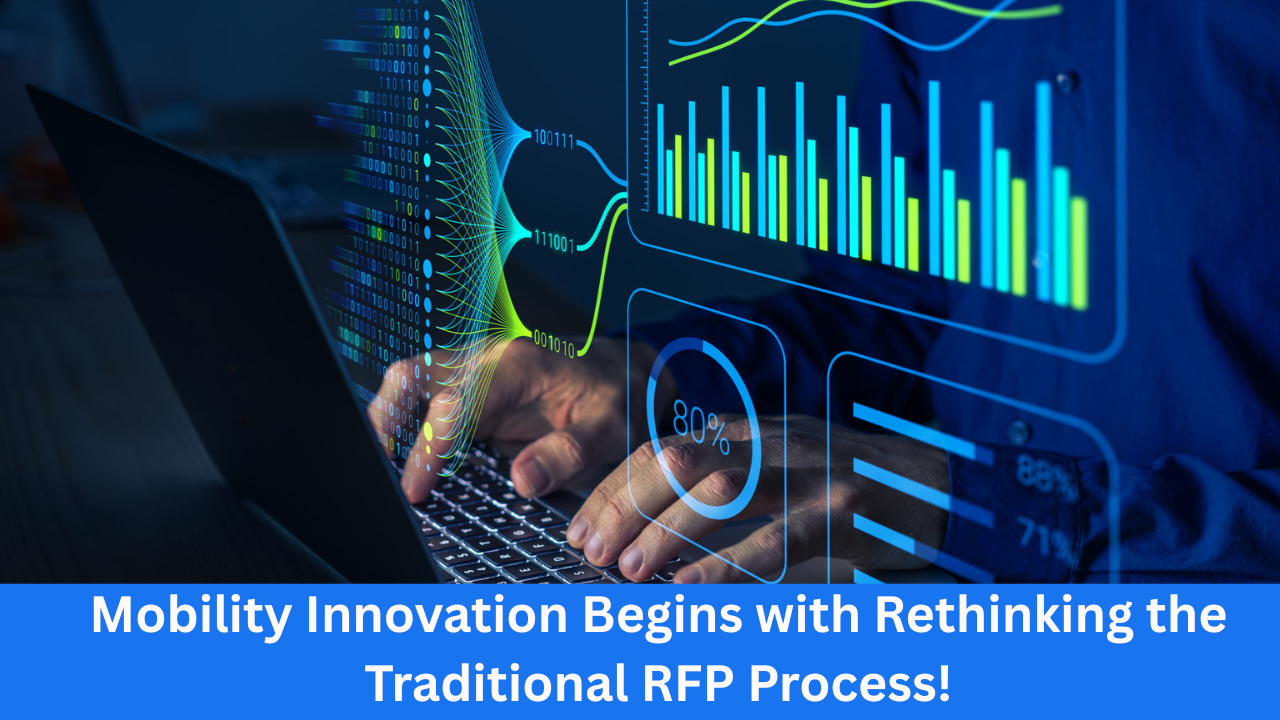The world of mobility innovation has long relied on Requests for Proposals (RFPs), where governments call for solutions from companies and startups. However, some leaders in the field believe it’s time to rethink this process. They propose that instead of using the traditional RFP model, governments should embrace more flexible, innovative pilot-based challenges. This new approach, they argue, could open the door to better collaboration, faster innovation, and more efficient mobility solutions.
At the CoMotion Miami conference earlier this week, Leigh-Ann Buchanan, the president and CEO of the nonprofit Miami-Dade Innovation Authority, laid out her vision for the future of mobility. “We need to reimagine the systems in how government engages with emerging technologies and startups,” she said. “We need to do away with RFPs, and replace them with pilot-based open-innovation challenges.”
Buchanan’s proposal revolves around a shift in how the government works with new technologies. Instead of waiting for companies to submit proposals in response to RFPs, she suggests creating opportunities where companies can test their ideas in real-world conditions through pilot programs. These pilot projects would allow governments to assess the viability of new technologies without committing to large-scale investments upfront.
The Benefits of Pilot Projects
One of the biggest advantages of pilot-based open-innovation challenges is the ability to de-risk new projects. By running smaller pilot programs, governments can test new ideas in practice before committing to a full rollout. This allows them to address potential issues early on, ensuring that only the most effective solutions make it to the final stage.
Moreover, pilot challenges can encourage more innovation from startups that typically have little access to public contracts. The traditional RFP process can be overwhelming and inaccessible for smaller companies, but by offering open challenges, governments provide them with a fair opportunity to showcase their technologies. This not only diversifies the pool of potential solutions but also injects fresh ideas into the public sector.
The Changing Landscape of Federal Funding
While pilot projects could be a game-changer for local and state governments, the broader political and funding landscape poses a significant challenge. According to John Rossant, founder and CEO of CoMotion, there has been a substantial shift in federal policy in recent years. “There has been a really radical change of tone from Washington, in which federal largesse is being cut off,” Rossant said. “You almost have the feeling that the federal government is anti-city.”
Rossant’s comment reflects the growing frustration that local governments and cities are feeling in the face of reduced federal support for transportation initiatives. The Trump administration’s realignment of federal funding programs has created new challenges for cities that depend on federal support to fund infrastructure projects. These policy changes have made it more difficult for cities to maintain and improve their transportation systems, leaving them to find alternative funding sources and solutions.
Despite these challenges, mobility leaders argue that this should not deter cities and states from seeking innovative solutions. Justine Johnson, Senior Vice President and Chief Mobility Officer at the Michigan Economic Development Corporation, noted that the uncertainty surrounding federal funding has actually pushed states to focus more on collaboration. “We’re having conversations that we hadn’t seen as much before. We’re continuing to force that level of collaboration,” Johnson said.
Collaboration as a Solution
Collaboration is the key to overcoming the obstacles posed by a lack of federal funding. Johnson pointed out that Michigan is working across political lines and in partnership with both public and private sectors to find creative ways to fund mobility initiatives. By collaborating with different stakeholders, including philanthropic organizations, private companies, and other governmental agencies, states and cities can pool resources and create a more comprehensive approach to mobility innovation.
For example, states like Michigan have been using the uncertainty about federal funding as motivation to explore alternative solutions. By working together and sharing resources, cities and states can come up with creative ideas that may not require large federal investments but still have a meaningful impact on transportation systems. As Johnson emphasized, the goal is to ensure that there is a space for innovation in infrastructure while creating new jobs in the process.
Reimagining Procurement: Moving Away from RFPs
One of the biggest barriers to innovation in government procurement is the traditional RFP process. While RFPs are designed to ensure transparency and fairness in selecting vendors, they can be rigid and slow-moving. This can stifle creativity, especially in a field like mobility, where new technologies and solutions are constantly emerging.
Buchanan, who is a self-described “destructor” and “recovering attorney,” believes that RFPs are not the best tool for solving modern mobility challenges. “We need to clear a path for technology or other innovators to step in and quickly produce a solution that can scale,” she said. According to Buchanan, pilot-based challenges offer a more flexible and efficient way to bring new technologies into the public sector. In this model, cities would outline the problem they need solved, but leave the solution open to a wide range of potential solutions from the private sector.
This approach allows governments to explore a broader set of solutions, including those from startups that may not have the resources or experience to navigate the complicated RFP process. By focusing on problem-solving rather than prescriptive solutions, governments can tap into a wider pool of creative ideas and innovative technologies.
Challenges and Opportunities
Of course, transitioning away from RFPs is not without its challenges. Stacy Miller, Director of Miami-Dade County’s Department of Transportation and Public Works, acknowledged that procurement processes exist for a reason. “I think there are checks and balances for a reason,” Miller said. However, she also pointed out that the ultimate goal should always be to ensure safe, efficient mobility. By rethinking how technologies are procured, governments could more effectively achieve this goal.
In many ways, the current moment is an ideal time to consider reimagining the mobility innovation process. With the challenges posed by federal policy changes and the growing demand for smarter, more sustainable transportation systems, governments must be open to new ways of collaborating with startups and private companies. Pilot projects offer a way to test new ideas without the risk of large-scale investments, making them a valuable tool for future mobility innovations.
The Path Forward
In the coming years, we may see more cities and states adopt pilot-based challenges to foster innovation in mobility. By replacing the traditional RFP process with open-innovation challenges, governments can de-risk projects, encourage collaboration, and allow smaller startups to contribute to solving critical mobility challenges.
As cities like Miami and Michigan continue to experiment with new approaches to mobility, the hope is that more regions will follow suit. Rethinking how we procure and implement new transportation technologies could pave the way for smarter, more efficient mobility solutions that are better equipped to meet the needs of the future.

Deepak Grover is a dedicated content writer at OTE News, specializing in government affairs, public policy, and current events. With a keen eye for detail and a passion for factual reporting, he ensures readers receive accurate and insightful news. Deepak holds a degree in Political Science and has experience in research-driven journalism.
When not writing, he enjoys reading historical books, exploring hiking trails, and staying updated with global political trends. His commitment to ethical journalism makes him a trusted voice at OTE News.




